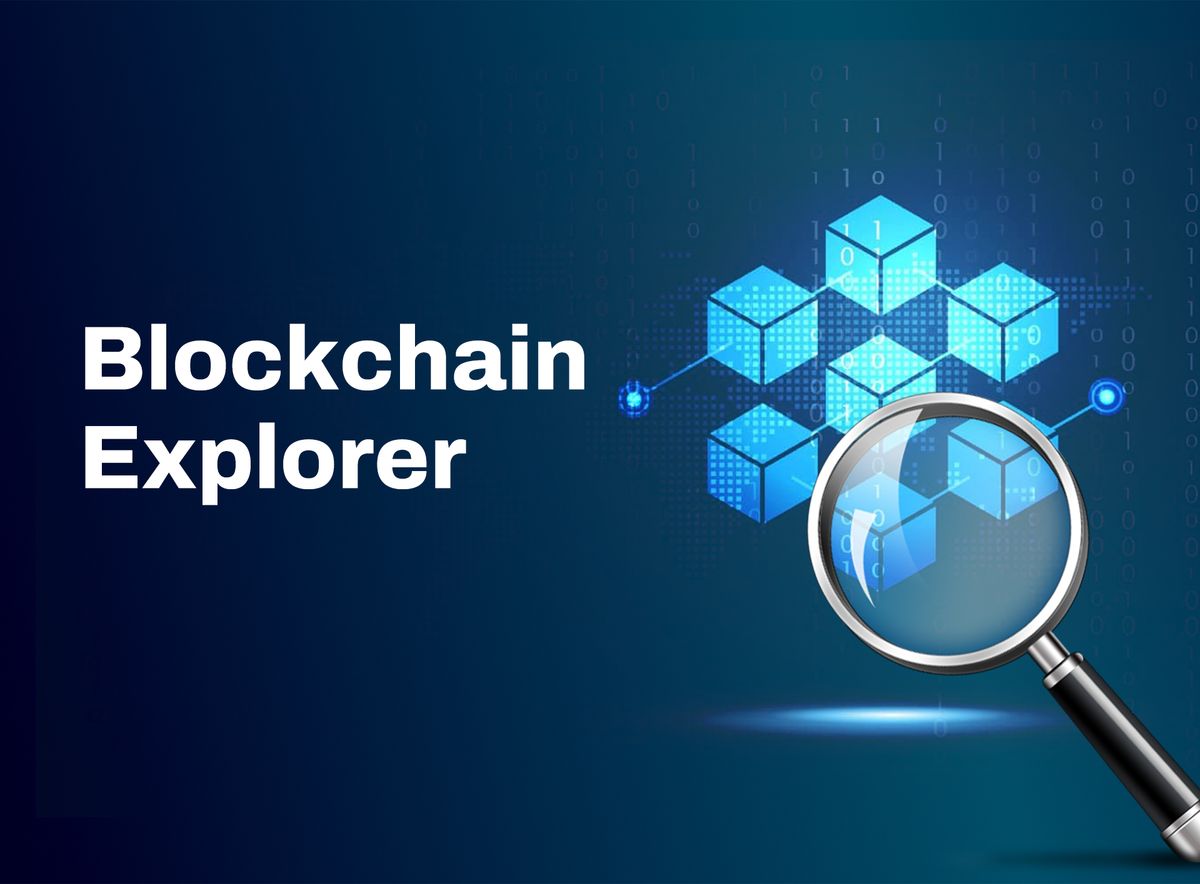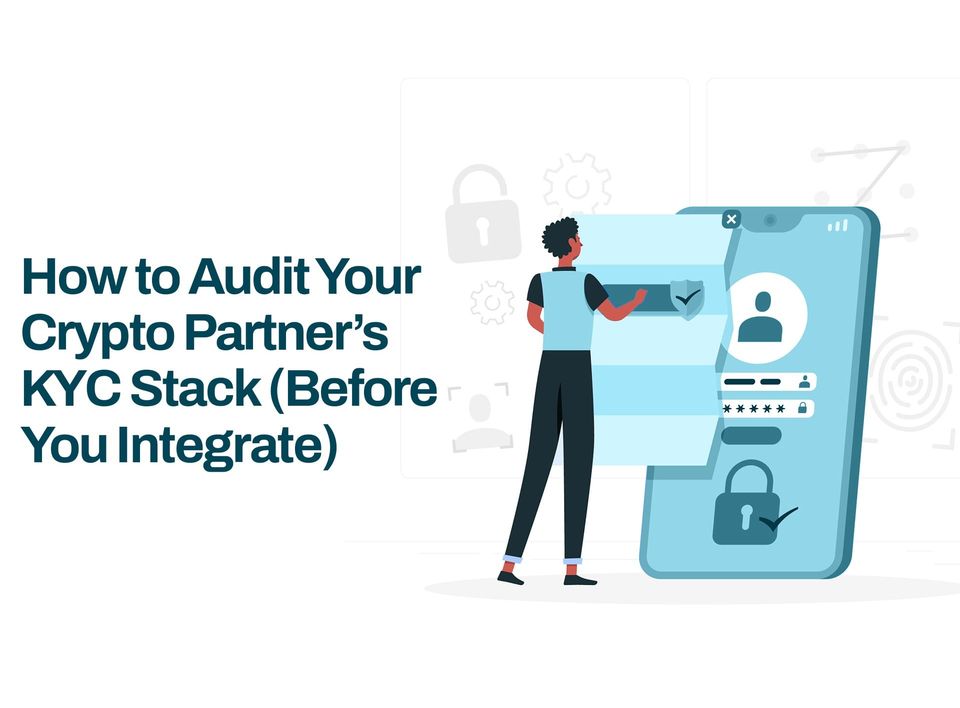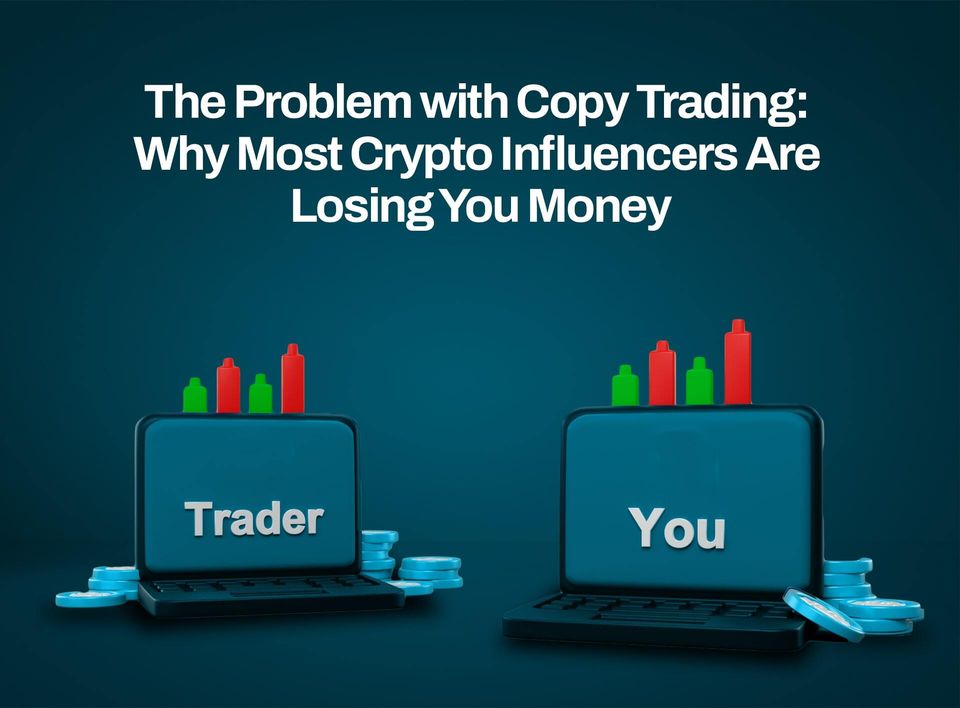What Is a Blockchain Explorer, and How Do You Use It?
Track transactions, verify wallet balances, and explore blocks. This beginner’s guide shows you exactly how to use any blockchain explorer.

Table of Contents
- What Is a Blockchain Explorer?
- The Importance of Blockchain Explorers in Cryptocurrency
- What Are Some Popular Blockchain Explorers?
- Key Features and Components of a Blockchain Explorer
- Why Use a Blockchain Explorer?
- How to Use a Blockchain Explorer
- Faqs
Blockchain explorers are particularly useful for checking the status of your crypto transactions or satisfying your curiosity about a wallet address.
They provide an accessible and user-friendly way to navigate the vast amount of information stored on a blockchain.
So, how do you use a blockchain explorer? This article will explain how and more.
What Is a Blockchain Explorer?
A block explorer or blockchain explorer is like a search engine for a blockchain—similar to how Google helps you find information on the internet.
Instead of searching for websites or articles, a block explorer lets you search for specific information on the blockchain.
Every time a cryptocurrency is sent from one wallet address to another, it creates a transaction.
These transactions are all recorded and stored on a digital ledger called a blockchain.
Think of a blockchain as a decentralised and secure record-keeping system that stores all cryptocurrency transactions. A blockchain explorer allows you to explore and search for specific transactions or wallet addresses on the blockchain.
The Importance of Blockchain Explorers in Cryptocurrency
Blockchain technology is often praised for its transparency because it offers a secure and decentralised way to store and verify information.
Unlike traditional systems where a centralised authority (like a Central Bank) controls data, blockchain decentralisation ensures that the information is shared and verified by multiple participants without a central authority overseeing it.
Now, blockchain explorers play a crucial role in upholding this transparency.
A blockchain explorer allows you to search and access both real-time and historical information about a specific blockchain. It provides you with valuable data related to blocks, transactions, wallet addresses, and more.
Additionally, a blockchain explorer lets you explore specific transactions, enabling you to check the sender, recipient, timestamp, and other relevant details.
This transparency empowers users to track the movement of assets and verify the integrity of the blockchain system.
What Are Some Popular Blockchain Explorers?
Every blockchain explorer is designed to work with a particular blockchain network.
For instance, you need a Bitcoin block explorer to explore the Bitcoin blockchain and an Ethereum block explorer to navigate the Ethereum blockchain.
Below are some blockchain explorers for popular networks:
- Etherscan.io for Ethereum transactions.
- BNB Beacon Chain Explorer for BNB Beacon Chain
- BSC Scan for Binance Smart Chain.
- Blockchair for Bitcoin.
- Tronscan for Tron
- Polygonscan for Polygon
- FTMscan for Fantom
- Atomscan for Atom
- Solana Explorer for Solana
Key Features and Components of a Blockchain Explorer
There are several key components of the blockchain explorer. Here's a breakdown of each component:
1. Search bar: The search bar allows you to easily search for specific information on the blockchain, such as transactions, blocks, or wallet addresses.
2. Transaction details: A blockchain explorer provides detailed information about transactions. This includes the amount of tokens transferred, sender and recipient addresses, and the date and time the transaction took place. These details offer transparency and help you to track and verify transactions.
3. Block details: You can access information about individual blocks in the blockchain. This includes the date and time a block was added, its height in the blockchain, and the number of transactions included in that particular block. Block details provide insights into the structure and progress of the blockchain.
4. Address details: Blockchain explorers also provide information about wallet addresses. You can find details such as the balance of a specific address, the number of transactions associated with it, and the activity and status of a particular address.
5. Network information: Detailed information about the network itself is available on blockchain explorers. This includes the overall state of the network, the current difficulty level, and the total number of transactions processed by the network. Network information helps you understand the health and performance of the blockchain.
6. Hash rate information: The hash rate represents the computing power dedicated to mining blocks on a blockchain. Blockchain explorers may provide visualisation or statistics on the hash rate, which reflects the level of security and activity on the blockchain. Higher hash rates generally indicate a more secure blockchain network.
7. Mempool size: The mempool refers to the pool of unconfirmed transactions waiting to be added to a block. A blockchain explorer may display the size of the mempool, which indicates the volume of activity occurring on the blockchain network. This information helps you track the number of pending transactions and the backlog on the network.
8. Transaction volume: Blockchain explorers often provide information on transaction volume, which reflects the value of confirmed outputs on the blockchain within a specific timeframe, usually the past 24 hours. It helps you assess the level of activity and usage of the blockchain network.
9. Price: Some blockchain explorers include a price section that provides an accumulated USD price feed across markets. This information may not necessarily reflect spot prices and is typically determined by the provider of the price feed. However, it offers you a quick reference for the value of cryptocurrencies.
Some blockchain explorers may include additional features in addition to these core components. For example, a chart showing the total number of transactions over time provides valuable insight into the network's growth and usage patterns.
Who Can Use a Blockchain Explorer?
A blockchain explorer can be incredibly valuable for individuals, groups and businesses. Let's explore why different groups find them useful:
1. Traders: If you're buying or selling cryptocurrencies, a block explorer can help you check the status of your transactions. You can verify whether a transaction has been confirmed, view transaction details, and more.
2. Miners: Block explorers help miners verify if they have successfully mined a block. They can also access other relevant information related to mining activities, such as block rewards, mining difficulty, and the network's hash rate.
3. Validators: Validators in blockchain networks, particularly those in Proof-of-Stake (PoS) or Delegated Proof-of-Stake (DPoS) networks, can use block explorers to monitor their blockchain activity and validate transactions.
4. Businesses: Businesses can use blockchain explorers to analyse transaction data associated with their projects. They can gain insights into how their products or services interact with the blockchain and assess the overall performance and impact of their operations.
5. Crypto Enthusiasts: These enthusiasts help crypto enthusiasts and people curious about crypto dive into the technical aspects of the blockchain. They provide access to information about the latest transactions, blocks, block difficulty, hash rate, block height, transaction fees, and transaction volume. It's like a library of information for those interested in the inner workings of the blockchain.
6. Whale Monitoring: Block explorers enable interested people to monitor the activity of individuals or groups with known blockchain addresses. People enjoy tracking the addresses associated with influential figures, such as Satoshi Nakamoto, the mysterious creator of Bitcoin.
In addition to these use cases, block explorers can provide details about market data, such as a cryptocurrency's circulating supply, maximum supply, and market capitalisation. This information is valuable for investors and market observers.
- It is worth mentioning that the information you find on a block explorer can vary depending on the blockchain it serves.
- Blockchains can have different structures, like Proof-of-Work (PoW) or Delegated Proof-of-Stake (DPoS), and each type shows specific details on their explorers.
- So, remember that the information you see might vary based on the type of blockchain you're exploring.
How to Use a Blockchain Explorer
Here's a step-by-step guide on how to use a blockchain explorer:
1. Open a browser and visit a blockchain explorer website. These sites are like search engines specifically designed for blockchain data.
2. On the explorer's homepage, you'll often find information about the latest transactions and blocks. It gives you a quick overview of the blockchain's recent activity.
3. To search for specific information, like a wallet address, transaction hash, or block number, locate the main search bar on the explorer website. The available search options may vary depending on the explorer and the blockchain you're exploring.
4. If you're looking for a particular transaction, you can use its hash or ID, which is usually provided by your wallet software when you initiate the transaction. Enter the hash or ID into the search bar and hit enter.
5. The blockchain explorer will then display detailed information about that transaction. You can check if the transaction has been confirmed or is still processing. You can also search for the address of the wallet from which you sent the transaction to view its details. Remember, only use your public key address when searching, not your private key address.
6. It's typically not recommended to search for a transaction by the block in which it was included, as a block usually consists of multiple transactions.
To Recap
- A blockchain explorer is a helpful tool for anyone who uses or is interested in cryptocurrency.
- It can provide different types of information, such as details about transactions, addresses, technical data, and even market information.
- Whether you're new to crypto or have experience, the blockchain explorer can help you check the status of your transactions or look up past transaction information.
FAQS
Q: What is a blockchain explorer?
A: A blockchain explorer is like a search engine for blockchain data. It helps you see details about transactions, blocks, and wallet addresses on the blockchain.
Q: Why are blockchain explorers important?
A: Blockchain explorers are important because they let you see what's happening in the cryptocurrency world. You can check transactions, ensure data is accurate, and see how healthy the blockchain network is.
Q: How do I use a blockchain explorer?
A: To use a blockchain explorer, Go to a blockchain explorer website (which is like a search engine for a specific cryptocurrency).
- Use the search bar to find details about a wallet address or transaction by typing it in and pressing Enter.
- The explorer will show you all the available information about the address or the transaction you searched for.
Q: Can I use the same blockchain explorer for different cryptocurrencies?
A: No, you need a different explorer for each cryptocurrency. Bitcoin has its explorer, Ethereum has its own, and so on.
Q: What are some examples of popular blockchain explorers for specific cryptocurrencies?
A: Ethereum: Etherscan.io, Bitcoin: Blockchair, Binance Smart Chain: BSC Scan.
Q: What are the key features and components of a blockchain explorer?
A: A blockchain explorer has a search bar, shows details about transactions and blocks, provides information about wallet addresses, and gives you data about the network's health and security.
Q: How do crypto traders use blockchain explorers?
A: Traders use blockchain explorers to check their transactions, see transaction details, and understand what's happening in the cryptocurrency world.
Q: How do miners use blockchain explorers?
Miners use blockchain explorers to ensure they've successfully created a block and see their rewards.
Q: What is the best Bitcoin blockchain explorer?
A: The "best" Bitcoin explorer depends on what you need. Some good ones are:
- Blockchair
- Blockchain.com
- Blockstream.info
- Bitcoin Explorer
Q: What market-related data can investors find on blockchain explorers?
A: Investors can see how much of a cryptocurrency is in circulation, its total supply, and its market value.
Q: How can I determine the circulating supply and market capitalisation of a cryptocurrency using a blockchain explorer?
A: Explorers often have a section that tells you how much of a cryptocurrency is being used and its value in the market.
Q: Are there any precautions to consider when using a blockchain explorer to search for transactions or wallet addresses?
A: Yes, be careful not to share your private key when searching; only use your public key, and watch out for fake explorer websites that try to steal your information.
Disclaimer: This article was written to provide guidance and understanding. It is not an exhaustive article and should not be taken as financial advice. Obiex will not be held liable for your investment decisions.




